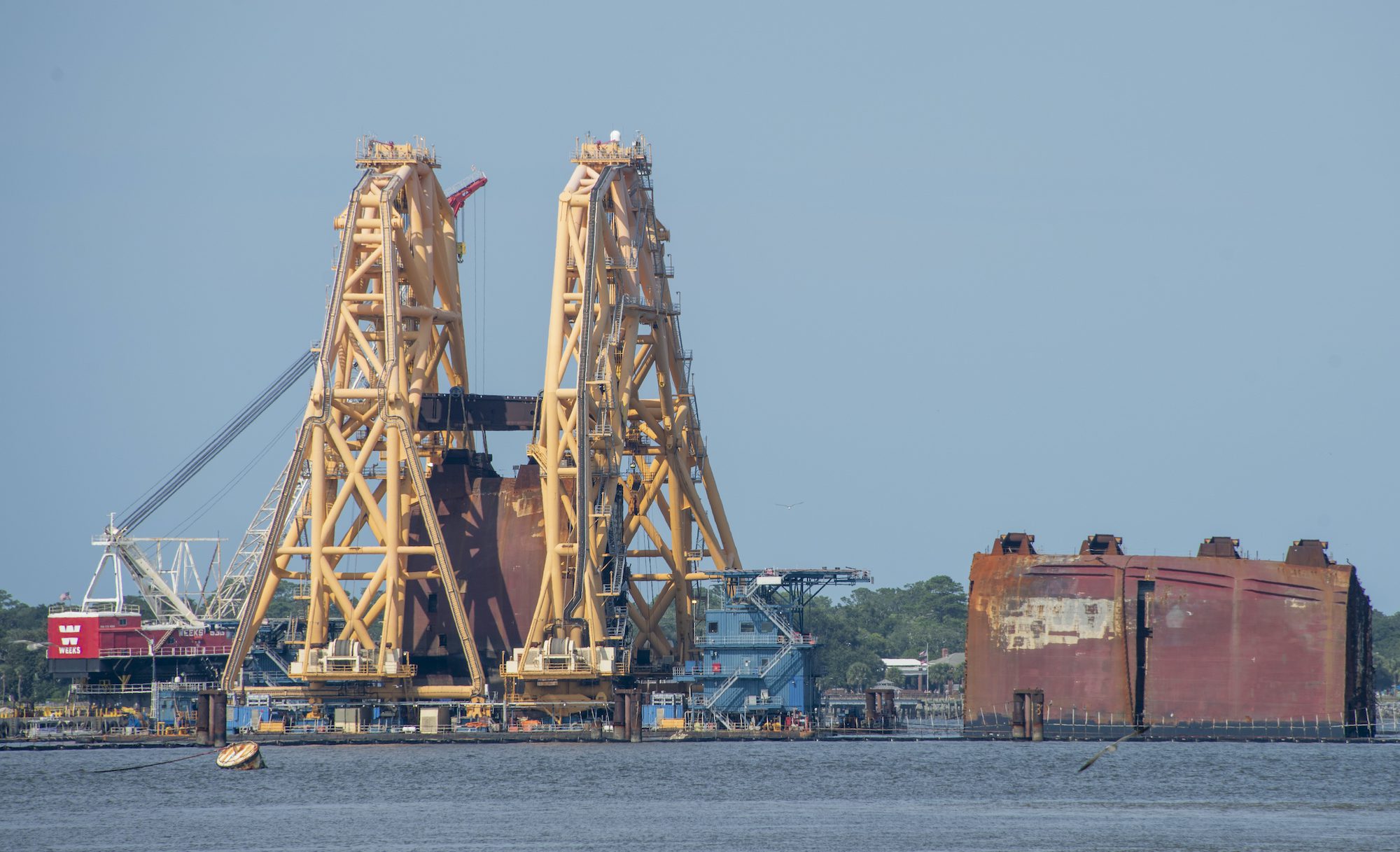Indian Navy Battles Engine Room Fire on Tanker in Gulf of Oman
The Indian Navy stealth frigate INS Tabar has responded to a distress call from the Pulau-flagged tanker MT Yi Cheng 6 in the Gulf of Oman on Sunday after the...

The St. Simons Sound Incident Response says crews have located and secured the source of oil discharges from the Golden Ray wreck which had complicated the salvage for about a week.
Wreck removal personnel capped a venting pipe after it was raised above the waterline during a partial lifting operation of Section Six of the Golden Ray wreck on Friday. The submerged vent was very likely the source of the oil discharges during lifting operations which started on Saturday, July 31.
The Incident Command said the venting pipe connected to two tanks which had fuel removed during fuel lightering operations back in October 2019. Since securing the vent, observers report minimal amounts of oil around the section.
Pollution mitigation teams will continue to monitor the section for any potential oil discharges and oil recovery vessels remain on-station 24-hours.
The amount of oil released has not been disclosed.
The VB-10000 on Sunday began to shift into a position to allow for a weight-shedding team to remove vehicles and any moveable decks from Section Six as required to reduce its overall weight. The section will be lifted and stowed onto a dry-dock barge once it is safe to do so.
“The training and preparation of the shoreline and on-water response teams showed in their rapid response to oil-impacts from Section Six,” said State On-scene Coordinator John Maddox of the Environmental Protection Division of the Georgia Department of Natural Resources, “we encourage the public to continue to remain vigilant when fishing, swimming or accessing the beaches until removal of the wreck is completed.”
Approximately 30 pollution response vessels remain at the wreck site to monitor for and mitigate any oil.
The 656-foot Golden Ray was carrying over 4,000 vehicles and had a pilot and 23 crew members on board when it capsized suddenly during a turn as it departed the Port of Brunswick on September 8, 2019, and came to rest on a sand bar. All crew members and the pilot were rescued, including four crew members stuck in the engine room for more than a day following the capsizing.
Wreck removal involves using the VB-10000 to cut the wreck into eight sections for removal by barge. With the Section Six completed, one cut and two sections remain.

Sign up for gCaptain’s newsletter and never miss an update

Subscribe to gCaptain Daily and stay informed with the latest global maritime and offshore news


Stay informed with the latest maritime and offshore news, delivered daily straight to your inbox
Essential news coupled with the finest maritime content sourced from across the globe.
Sign Up